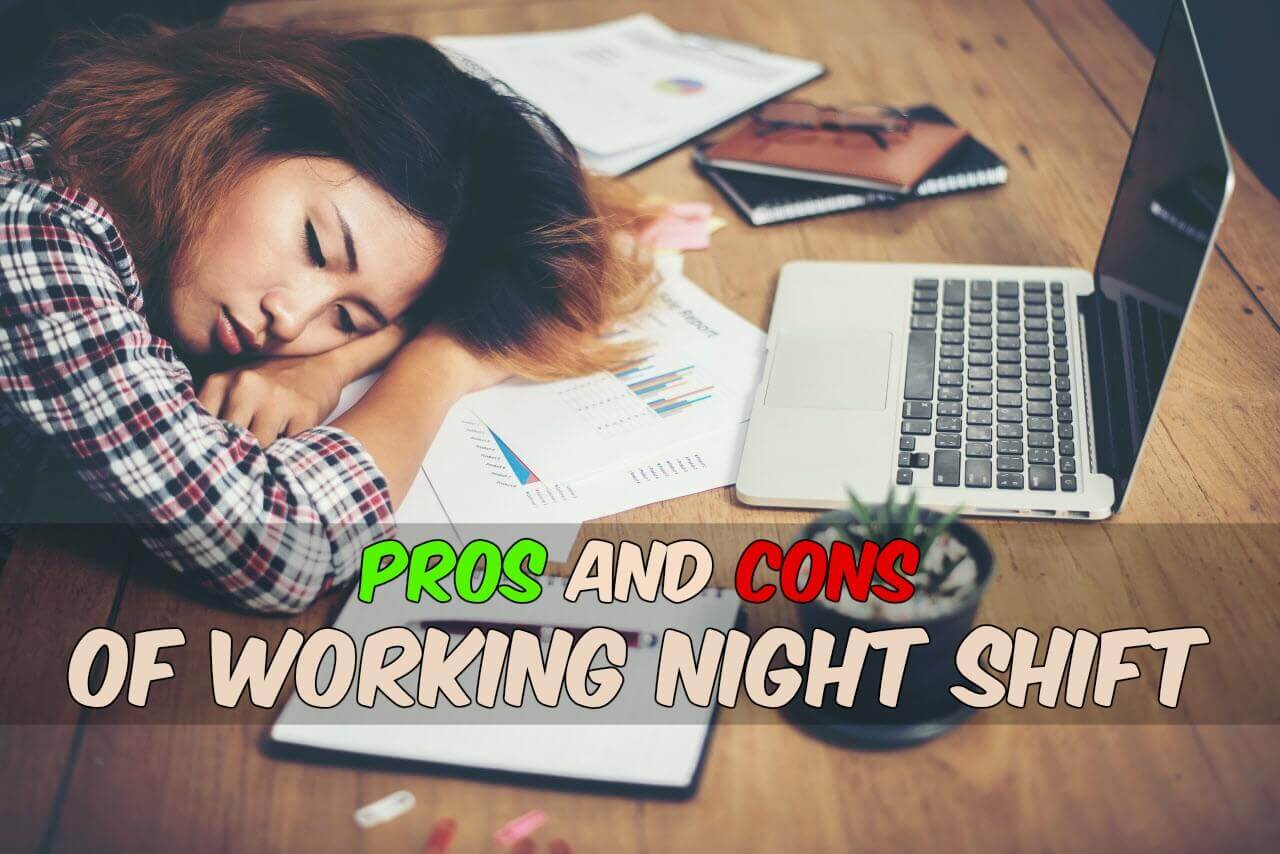Working late nights can have its advantages, but it can also come with certain risks. In this blog post, we’ll look at the benefits and risks of working late nights from both the employer’s and employee’s perspective.
We’ll cover everything from productivity to safety to mental health. Read on to learn more about how you can make the most of your late-night work hours!

Introduction
Shift work and night working can be beneficial to employers, employees and the self-employed. This guide provides information to employers and employees on the risks associated with shift work, night working and extended hours. It also offers guidance on how to reduce such risks by providing advice to safety representatives and employees on suggested measures they can take.
The risks linked with shift work include obesity and diabetes as sleeping during the day has been shown to increase these risks. The guide outlines how employers should offer a free health assessment for night workers as well as suggesting methods of reducing the risk including going to bed at different times for regular shifts or never fully adjusting for those on permanent night shifts.
Overall, this guide is useful in providing information on shift work, night working, extended hours and their associated risks as well as offering advice on how they can be managed effectively.

Why Do People Work Late Nights?
Working late nights can be beneficial for employers and employees. It allows businesses to keep their operations running 24/7, and it can provide workers with extra income. However, working late nights can also present some health risks and challenges.
Employees may struggle to stay awake, become fatigued and stressed, or develop a “shift work sleep disorder”. Employers must ensure they comply with the laws on night work hours, adhere to health & safety standards, manage shift patterns responsibly, and support employees in managing their own wellbeing. With the right measures in place for both employers and employees, working late nights can be a rewarding experience for all involved.

Benefits of Working Late at Night
Working late at night can bring both benefits and risks to employers and employees. For employers, late-night work can result in increased productivity due to fewer distractions and a more focused work environment. For employees, working late at night can be a great way to get ahead in their careers or earn extra income. However, there are certain risks associated with working late into the night that must be taken into consideration.
The body’s natural circadian rhythm plays an important role when it comes to working late at night, as it affects our energy levels and ability to focus on tasks. Employees who regularly work long hours may experience fatigue, difficulty sleeping or even sleep disorders due to disruption of their circadian rhythm. Additionally, research has shown that workers who frequently switch between day shifts and night shifts have an increased risk of obesity, diabetes and heart disease.
Finally, employers should consider the potential safety issues related to working late into the night such as increased risk of accidents due to fatigue or lack of concentration. Employers should ensure they provide adequate training for their staff on how best to manage fatigue while working long hours in order minimize these risks.
In conclusion, while there are some benefits associated with working late into the night for both employers and employees alike, it is important that proper measures are taken by both parties in order ensure that everyone is safe and healthy while engaging in this type of work schedule

Risks of Working Late at Night
Working late at night can be beneficial for businesses and employees alike, but there are certain risks associated with this type of work. Employers must identify the health and safety hazards associated with shift work and night work, and take action to control the risks. Night workers should also be aware of the potential risks that come with working late hours, such as increased risk of obesity and diabetes, fatigue, miscarriage, stress and errors. Employers must ensure that their staff is informed of any health and safety hazards associated with shift or night work. Taking well timed naps during a shift can help reduce the risk of making errors due to fatigue. There are laws in place that restrict how long a night worker can work in one 24-hour period – no more than 8 hours – so employers must make sure to abide by these rules to protect their staff’s health and safety. With proper training and planning, working late nights can be made safe for both employers and employees alike.

Tips for Employers to Reduce the Risk of Working Late at Night
Working late nights can be a great way for employers to increase productivity and efficiency. However, it is important for employers to be aware of the risks associated with working late hours. This guide provides tips on how to reduce the risk of working late at night, while still reaping the benefits of increased productivity.
When scheduling night shifts, employers should consider creating a well-organised shift schedule that takes into account employees’ needs for rest and sleep. Employers should also ensure that workers have access to appropriate breaks during their shifts and are encouraged to take well-timed naps if needed. Taking regular breaks can help night workers stay alert and reduce the risk of making errors on the job.
Employers should also be mindful of the fatigue associated with working long hours in order to prevent accidents, ill-health and injury, as well as reduced productivity. Studies have shown that workers who take on night shifts often experience higher levels of depression or mood disorders than those who do not work at night. Therefore, employers need to ensure they provide adequate support for their employees when it comes to taking on extended hours or shift work schedules.
Finally, employers should be aware that there are certain rules surrounding extended hours for those who work in hazardous environments or heavy physical/mental strain jobs – such as miners or construction workers. The law states that no worker can be made work more than eight hours in any 24-hour period in these situations – so it is important

How to Balance Your Sleep Schedule When Working Late
Nights
Working night shifts can have both benefits and risks for employers and employees. There are ways that employers and employees can balance their sleep schedule when working late nights to maximize safety, performance, and health.
Employers should be aware of the potential risks of shift work and take steps to minimize them. For example, they should ensure that workers are taking regular breaks, nap times are scheduled during shifts, and workers receive adequate training on how to manage their sleep schedules.
On the employee side, it is important to practice good self-care techniques when working night shifts such as maintaining a consistent sleep schedule, making sure you get enough restful sleep, eating healthy meals throughout the day/night and avoiding caffeine close to bedtime. It may take some time for your body to adjust but with good self-care practices it is possible to make a successful transition into night shift work.
Overall, working night shifts can be beneficial in terms of pay or career advancement opportunities but employers need to be aware of the potential risks associated with shift work such as fatigue or insomnia so they can provide support for their employees. With proper preparation and knowledge on how to manage your sleep schedule when working late nights both employers and employees will benefit from a safe environment free from fatigue or errors caused by lack of restful sleep.
Eating Well During Late Shifts
Working late-night shifts can have both benefits and risks for employers and employees. For employers, it allows them to condense working hours, resulting in improved productivity and better work-life balance for their employees. However, it is important for employers to consider the timing of meals and encourage their employees to eat a nutritious, well-balanced diet during this time.
For employees, working late night shifts can provide more flexibility but also comes with potential risks. These include disruption of sleep patterns, increased fatigue, digestive problems due to disruption of the circadian rhythm, cardiovascular and gastrointestinal troubles as well as effects on reproductive health. Taking naps during a shift can help increase alertness and reduce errors but shift workers should also be aware that they may be at greater risk of developing chronic diseases such as obesity due to hormone imbalances caused by their irregular eating patterns.
Overall, employers should take necessary steps to ensure that their late-night shift workers are able to maintain healthy eating habits while still meeting their job requirements. By encouraging nutritious meals and providing adequate rest periods throughout the day or night shift schedule they can help ensure that their employees stay healthy and productive in the long term.

Exercising During Late Shifts
Working late nights can be a beneficial and rewarding experience for both employers and employees, but it comes with its own set of risks. Employers need to take extra precautions to ensure the safety of their staff when they are working late night shifts, while employees should be aware of how to exercise during such shifts in order to maximize their performance and reduce fatigue. This guide outlines the benefits and risks associated with working late nights, as well as suggestions on how both employers and employees can exercise safely during late night shifts.
For employers, the benefits of having staff work late night shifts include increased productivity due to fewer distractions at night, improved customer service since staff have more time to engage customers without being rushed, and cost savings from not having to pay overtime or premium rates for after-hours work. However, it is important for employers to consider the potential risks associated with this type of shift work such as fatigued workers making mistakes or engaging in unsafe practices due to lack of sleep or concentration. To minimize these risks, employers should consider implementing flexible scheduling policies that allow workers enough rest between shifts and providing adequate supervision while they are on duty. Furthermore, good communication between managers and staff is essential in order for any issues related to fatigue or other health concerns can be addressed promptly.
For employees exercising during their late night shifts is an important way of staying alert and energized throughout the shift while minimizing fatigue-related issues like insomnia or digestive problems later on. To ensure safe practice when exercising
Socializing During Late Shifts
Shift work, including working late nights, can have a great impact on both employers and employees. While some employees may enjoy the non-traditional schedule and the benefits that come with it, there are still potential risks to consider. This guide aims to provide an overview of these risks so that employers can make informed decisions when it comes to shift work, such as setting clear expectations for employees who socialize during their late shifts.
Working late nights can disrupt family and social activities which could adversely affect mental health and mood disorders. It is important for employers to establish appropriate shift systems to ensure proper rest in between shifts and consider implementing penalty rates for night work or overtime if necessary. Furthermore, cognitive performance could worsen over consecutive night shifts or following exposure to very long work hours. Therefore, it is essential for employers to monitor employee performance and provide adequate breaks throughout the day in order for their workers to remain productive.
All in all, this guide provides information about the benefits and risks associated with shift work so that employers can make informed decisions about how best to manage their business while also protecting the wellbeing of their employees. With proper management and support from both employers and employees, shift work can be beneficial while minimizing any potential negative impacts on health or personal life.

Taking Breaks During Long Hours
Working late nights can be beneficial for both employers and employees, but it also poses certain risks. Employers should take into consideration the potential health hazards of shift work and night work, and take steps to ensure that their workers are able to take regular breaks during long hours. Employees should be aware of their rights when it comes to working hours, such as the maximum average working week of 48 hours and the need for consultation on health and safety matters. Working late nights can result in chronic fatigue, obesity, diabetes, mistakes, accidents and injuries if sleep is not taken into consideration. By understanding the benefits and risks associated with working late nights employers and employees can make informed decisions about their working patterns to ensure a safe environment.

Creating a Supportive Environment for Employees Who Work Long Hours
Working late nights can be beneficial for both employers and employees, but it also comes with its own set of risks. Employers must identify the hazards and levels of risk associated with shift work, night work and extended working hours, and take action to control them. This guide explains all you need to know about creating a supportive environment for employees who work long hours.
The guidance is aimed at employers, safety representatives, trade union officials, employees, regulators and other stakeholders. Working the night shift has a negative impact on mental health due to an increased risk of depression and mood disorders. To help reduce these risks employers should ensure their staff are taking regular breaks during their shifts as well as providing access to mental health resources if needed.
Taking well-timed naps during a shift can help night workers increase alertness and reduce the risk of making errors. Additionally, employers should provide suitable rest facilities complete with comfortable seating arrangements as well as providing healthy snacks/meals during shifts to increase productivity levels amongst their staff.
By following best practices when it comes to managing late-night shifts employers can create a safe working environment for their staff whilst ensuring that they are still able to reap the many benefits that come from working long hours such as increased job satisfaction and better job security.

Talking Openly About the Risks and Benefits of Working Long Hours
Working late nights can be hazardous to your health and safety, as well as reduce productivity. Fatigue resulting from working long hours can lead to errors and accidents, ill-health and injury, and decreased productivity. Consequently, employers need to take measures to ensure the safety of their employees when they are asked to work late nights. This includes creating a healthy work-life balance for employees by limiting the number of hours worked in any given 24 hour period, providing regular breaks during shifts, and scheduling faster rotations of shifts (every two to three days). The Health & Safety at Work Act provides guidance on how employers should manage the health and safety risks associated with working long hours. Additionally, it is important for employers and employees alike to have open conversations about these risks so that appropriate measures can be taken. By doing so, both parties can take advantage of the benefits associated with working late nights while also minimizing potential hazards.

Conclusion
Working late nights can come with both benefits and risks. Employers should be aware of the potential physical and mental health effects that shift work can have on employees, such as disruption of sleep, increased fatigue, cardiovascular and gastrointestinal problems, reproductive health issues, and an increased risk of industrial accidents. Employees should be aware of possible long-term health risks associated with working night shifts for 15 years or more such as a higher risk of obesity and diabetes, poorer sleep duration and/or quality, lung cancer mortality and even breast cancer. To help ensure the safety of employees in these situations employers should provide adequate support to workers when it comes to their scheduling needs as well as providing education regarding the potential risks associated with working late nights.

![young-businesswoman-working-night[1]](https://www.viralstories360.com/wp-content/uploads/2022/12/young-businesswoman-working-night1-696x398.jpg)